Capitol Hill Symposium on Vehicular Terrorism: Highlights From SIA’s Second Annual Event on Hostile Vehicle Attacks
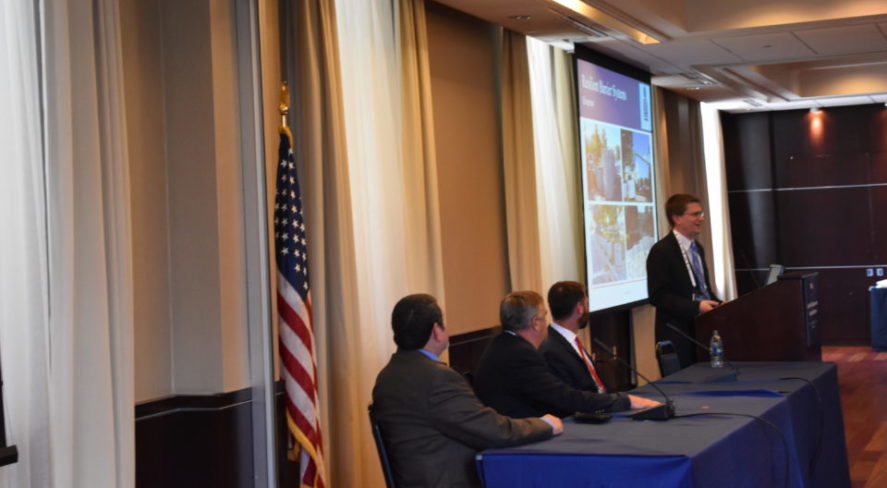
On Oct. 17, the Security Industry Association (SIA) hosted a free symposium on preventing vehicular terrorism. This event, held at the Reserve Officers Association on Capitol Hill in Washington, D.C., brought together policymakers, federal agency personnel, state and local government leaders, public safety personnel, project designers, security industry solution and service providers, and other stakeholders to examine how safety and security of facilities and public spaces can be enhanced – with a particular focus on protecting pedestrians and crowds.
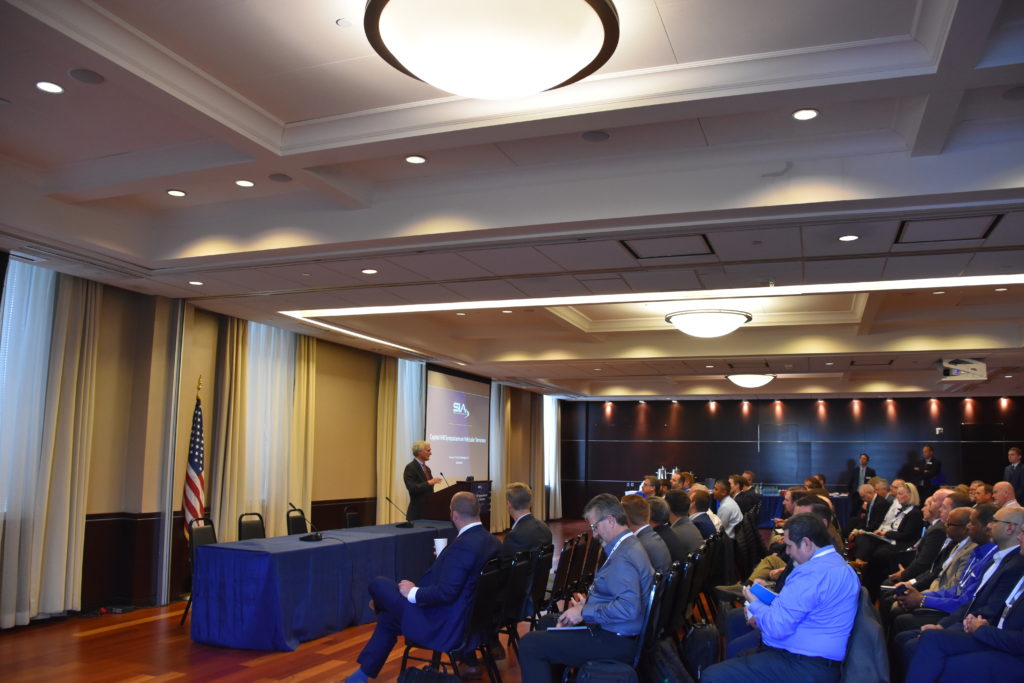
In the symposium’s opening remarks, Rep. Bob Latta (R-Ohio) discussed the importance of safeguarding public spaces against vehicular terrorism at events like parades and recognized the security industry for its work to protect people.
“The work never ends – it’s a 24/7/365 job to make sure we’re protecting people out there, so I applaud you for it,” Latta said.
Additionally, Rep. Latta encouraged security industry stakeholders to contact his office with ideas, suggestions and input on legislation to help prevent vehicular attacks.
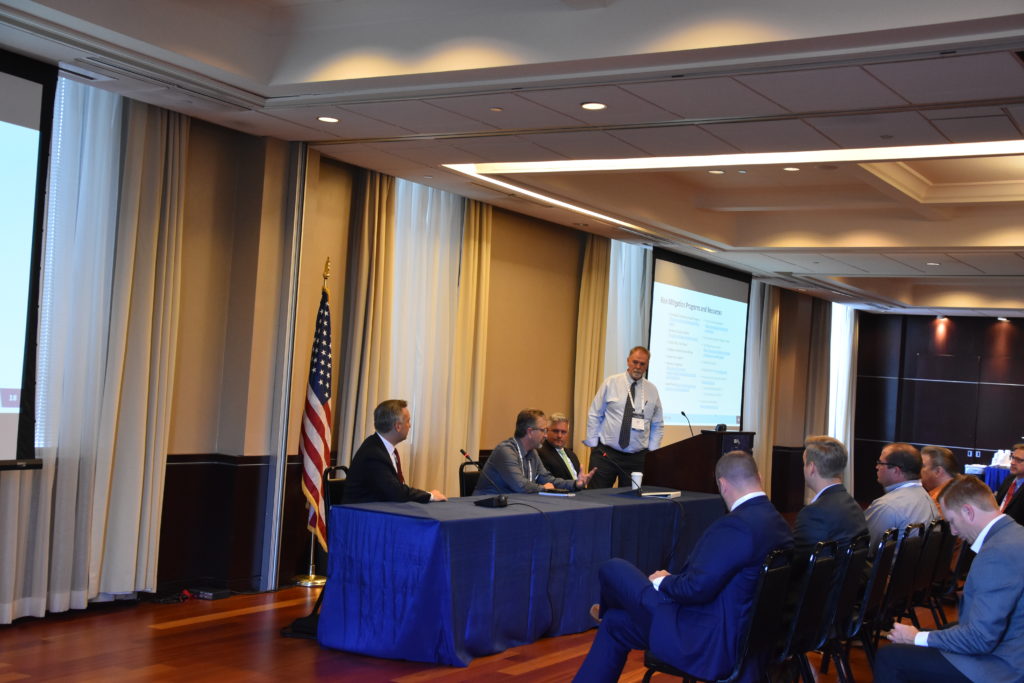
Next, Shannon Brown of the Cybersecurity and Infrastructure Agency (CISA) within the U.S. Department of Homeland Security (DHS), Jeff Halaut of Halaut Consulting and Jeff Friedman of Building Intelligence discussed CISA’s efforts to address vehicle ramming. This session explored the history of vehicular terrorism, the growing prevalence of this low-sophistication, high-lethality type of attack and CISA’s vehicle ramming mitigation initiatives. Brown highlighted CISA’s CIPAC Working Group and a number of programs and resources relating to vehicular terrorism, including Hometown Security, Partners in Prevention: Vehicle Rentals and Vehicle Ramming, Securing Soft Targets and Crowded Places Resources and Vehicle Ramming: Security Awareness for Soft Targets and Crowded Places.
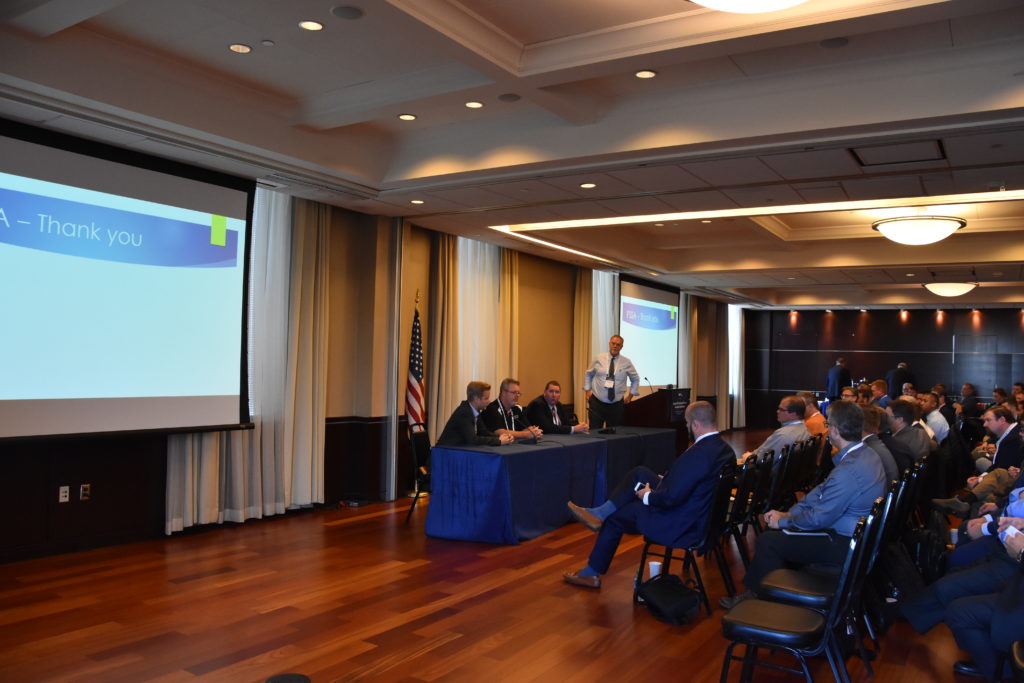
In the next session, Paul Jeffrey of the United Kingdom’s Perimeter Security Suppliers Association (PSSA), Terry Young of B&B Roadway Security Solutions and Calspan’s Jonathon Gondek highlighted UK planning, policies and standards for hostile vehicle mitigation. Jeffrey discussed the PSSA’s work to promote ongoing quality improvement within the perimeter security industry; its members’ work to protect against vehicle-borne improvised explosive devices, vehicle as weapon, accidental vehicle impact and close quarter attack and the security threats posed by poor threat assessments, poor design, inappropriate product selection, unqualified installers, lack of maintenance and lack of consideration of risks. The panelists also discussed the testing process of bollards and other perimeter security products and how the United States and how the PSSA website and resources can be used to search for vetted solutions.
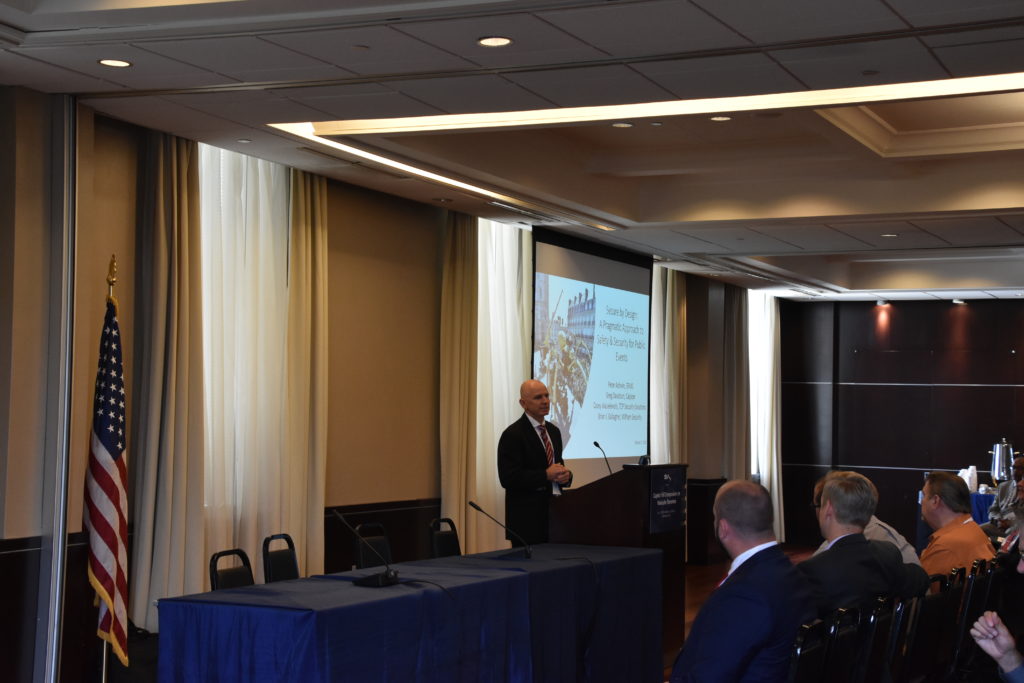
In the session “Secure by Design: A Pragmatic Approach to Safety and Security for Public Events,” Peter Ashwin of Event Risk Management Solutions discussed how security companies can help industry partners as suppliers and help partners “buy down their risk.” Ashwin discussed key elements of security by design, including venue design and orientation (how people enter a venue), deconflict vehicle movements from pedestrian flows, traffic and parking management plans, vehicle access control plans and vehicle checkpoints, “last-mile” security, vehicle security barriers, unified command and training and emergency response plans; crowd safety and people flow challenges; and the benefits of improvised, deployable, pedestrian- and vehicle-permeable solutions.
Ashwin was then joined by Greg Davidson of Calpipe, Casey Wasielewski of TCP Security Solutions and Brian J. Gallagher of Mifram Security/OmniPoynt Solutions LLC for a panel discussion on public event security, including how industry can help cities find creative ways to protect events and excel at explaining what particular products are and do to event partners to maximize security.
“You have to be able to tell them its capabilities because otherwise they’ll use it however they want,” Wasielewski said.
Davidson encouraged cities to designate single courses for parades and big events that follow a similar route to facilitate the event security process and encourage more events.
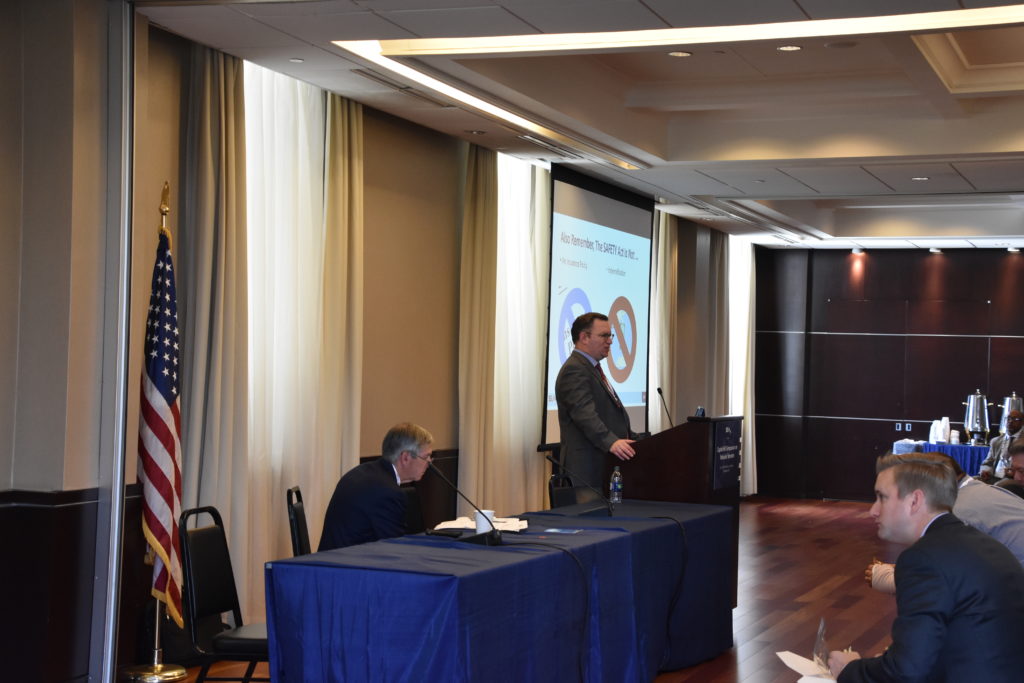
In the event’s lunch session, “SAFETY Act: Promise and Limitations for Risk Mitigation, Liability Protection and Product and Performance Standards,” Brian Finch of Pillsbury Winthrop Shaw Pittman LLP and Bruce Davidson of DHS’ Office of SAFETY Act Implementation shared updates on the SAFETY Act program, which provides incentives for the development and deployment of anti-terrorism technologies by creating systems of risk and litigation management. Davidson shared successes from the SAFETY Act program in 2019, including high numbers of approved applications and renewals and strong processing time, highlighted examples of security and safety initiatives that have been funded through the act and shared advice for prospective applicants, including being self-governed and adaptive. Finch discussed typical SAFETY Act frustrations and advice for avoiding situations like MGM’s recent challenges in triggering the SAFETY Act in its law suit following the 2017 mass shooting in Las Vegas, Nevada.
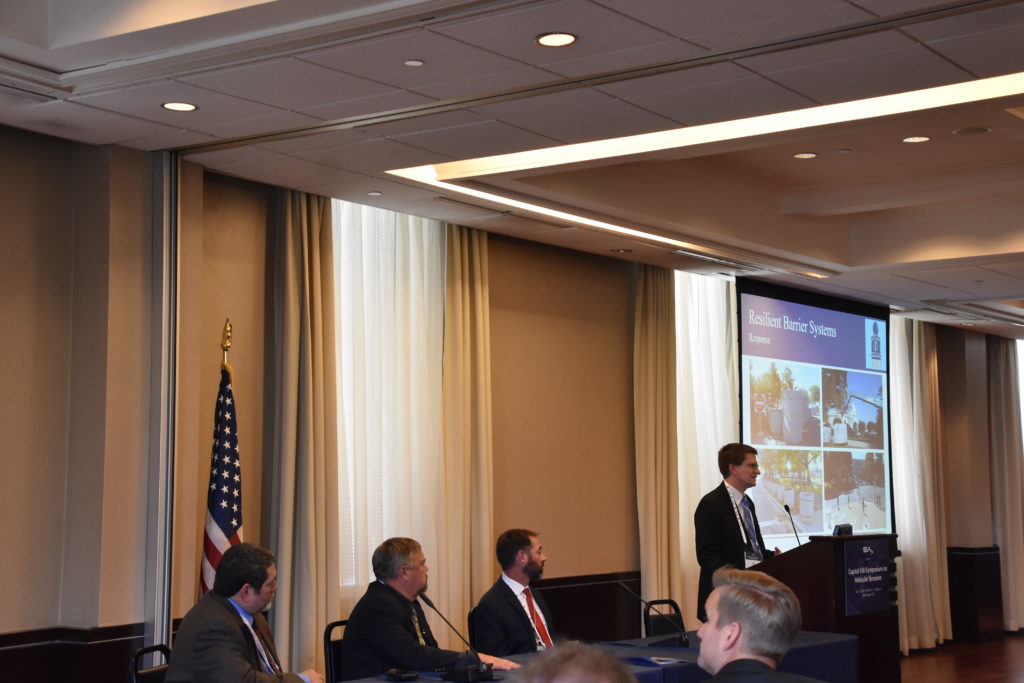
In the next session, Joe Okes of the Architect of the Capitol, Matt Roland of the Pentagon Force Protection Agency, Scott Rosenbloom of Ameristar and Peter Lewellen of Gibraltar discussed the life cycle of security barriers, including specification, installation, maintenance, repair and replacement decisions. The presentation highlighted key elements in maintaining and replacing bollards and other barriers and emphasized the need to have trained professionals who understand how to correctly assess and document the condition of these solutions throughout their life cycles.
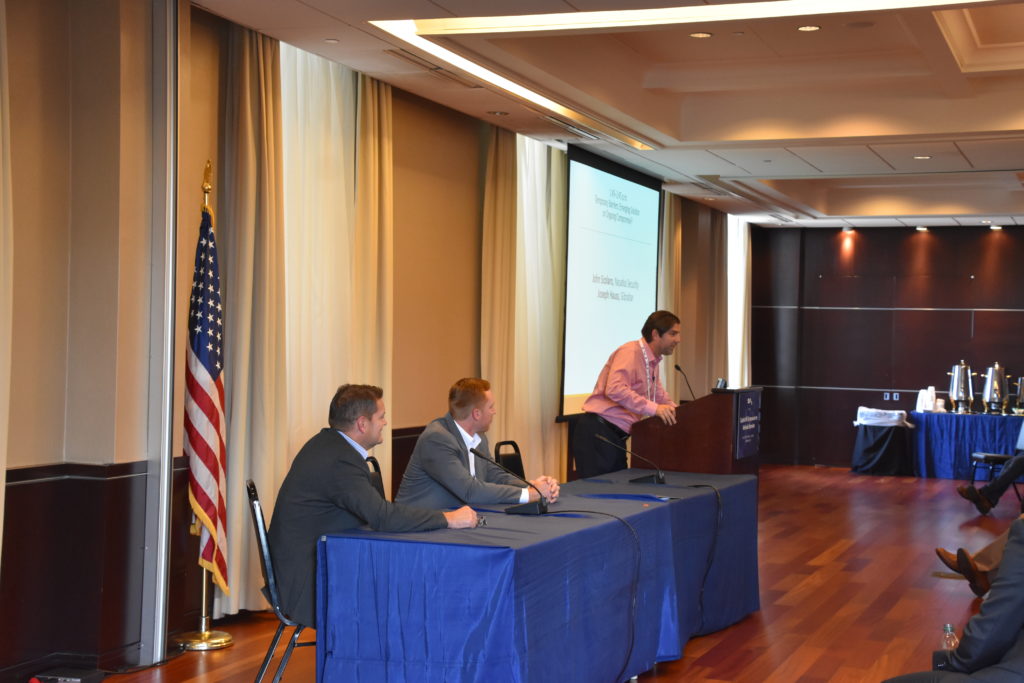
The final session of the day featured a discussion between John Scolaro of Nasatka Security, Jonathan Berry of Marshalls and Joseph Hauss of Gibraltar on key issues regarding temporary barriers. The panelists weighed differences between permanent and temporary barriers, the cost considerations and other advantages and disadvantages of permanent versus temporary solutions and discussed safety and security design considerations with access control and perimeter security, working with end users to provide consultation and engineering to ensure the proper implementation of solutions and infrastructure and the longevity of well-maintained systems.
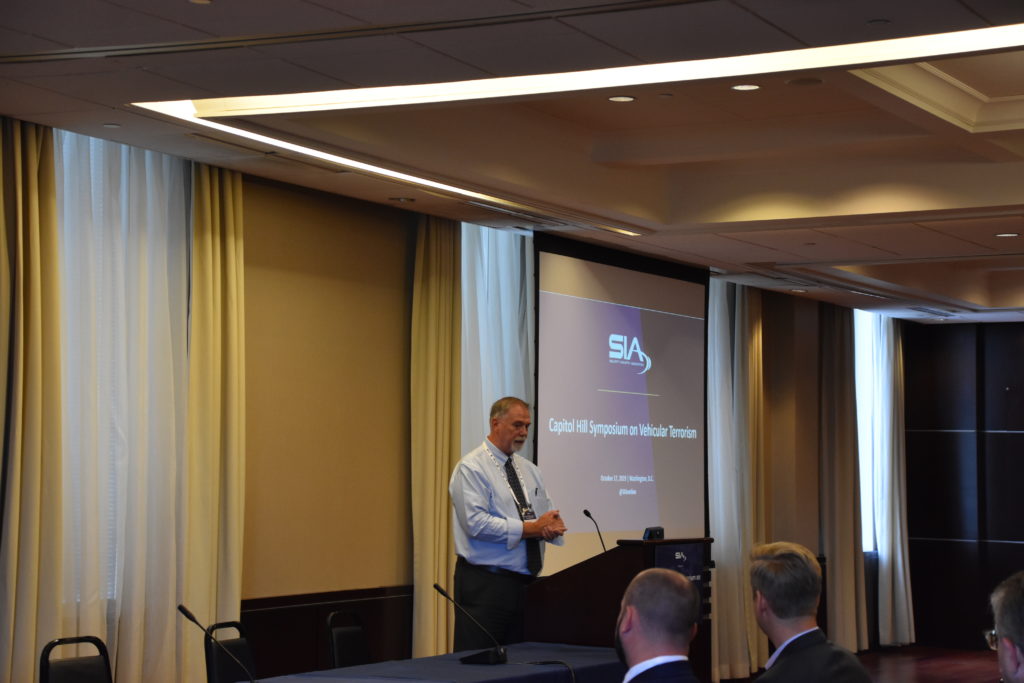
Rob Reiter, chair of SIA’s Perimeter Security Subcommittee and co-founder of the Storefront Safety Council, worked with SIA to coordinate and develop the symposium and served as the moderator for the event.
For more photos from the Capitol Hill Symposium on Vehicular Terrorism, view SIA’s photo gallery.
Thank you to all of our event attendees, speakers and sponsors – B&B Roadway Security Solutions, Calpipe Security Bollards, Calspan, Gibraltar, Marshalls, Mifram Security, Nasatka Security, TCP Security Solutions and PSSA – for helping make this symposium a success!
